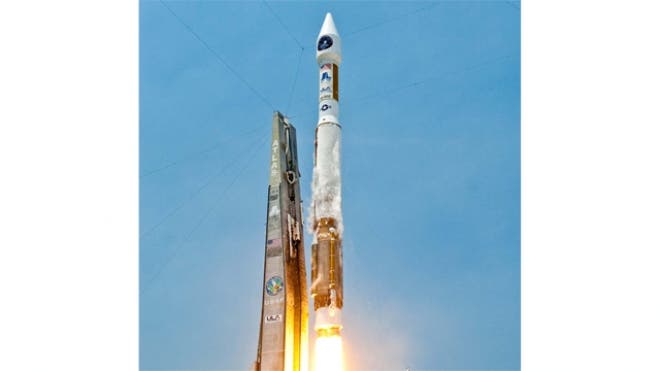
This Saturday the United States Military launched a new geosynchronous satellite into orbit as part of its Space-Based Infrared System project, which is intended to enhance the country’s ability to detect, track and counter enemy missiles.
Part of an effort to enhance the country’s security, the satellite was launched into orbit by an unmanned Atlas 5 rocket from Florida’s Cape Canaveral Air Force Station, after the initial launch was delayed by a day due to unfriendly whether. The $1,3 billion satellite is the first out of the four satellites projected for the Space Based Infrared System (SBIRS), a project which outperforms and intends to replace the current Defense Support Program satellites, which are still in orbit.
Today, we launched the next generation missile warning capability,” Air Force Space Command commander Gen. William Shelton said in a statement. “It’s taken a lot of hard work by the government-industry team and we couldn’t be more proud. We look forward to this satellite providing superb capabilities for many years to come.”
The satellite, dubbed GEO-1, will circle the Earth in a geosynchronous orbit at about 22,000 miles its coverage area, and provide enhanced early warning of incoming missiles though its infrared heat-sensitive technology, gather intelligence, as well as situational awareness for military personnel. Officials say it’s main feature is the fact that it can track multiple areas and potential threats at once, as opposed to the current “attention deficit” defense satellites currently in orbit.
“SBIRS GEO-1 represents the dawn of a new era in overhead persistent infrared surveillance that will greatly improve our national security for years to come,” said Brig. Gen. (select) Roger W. Teague, the U.S. Air Force’s Infrared Space Systems Directorate director, in a statement.
The launch was surprised and developed by United Launch Alliance, a company who has a long run of history and contracts with the United States Military, and N.A.S.A. as well. This was the 26th launch by United Launch Alliance’s Atlas 5 rocket, providing a 100% success rate.
“It’s a great day for United Launch Alliance, we have been entrusted to launch the most important missions for this country – be it for NASA, the military or for the private sector,” said ULA spokesman Chris Chavez. “This is our 50th launch overall, our 26th using the Atlas 5 launch vehicle and our fifth launch this year already.”
The SBIRS program is considered by officials as one of the nation’s highest priority space security programs as it is expected to provide global, constant infrared surveillance that will accomplish a number of national defense requirements . The system is expected to provide accurate early warning of incoming missiles to the U.S. President, Secretary of Defense and military commanders in the field.
Was this helpful?



